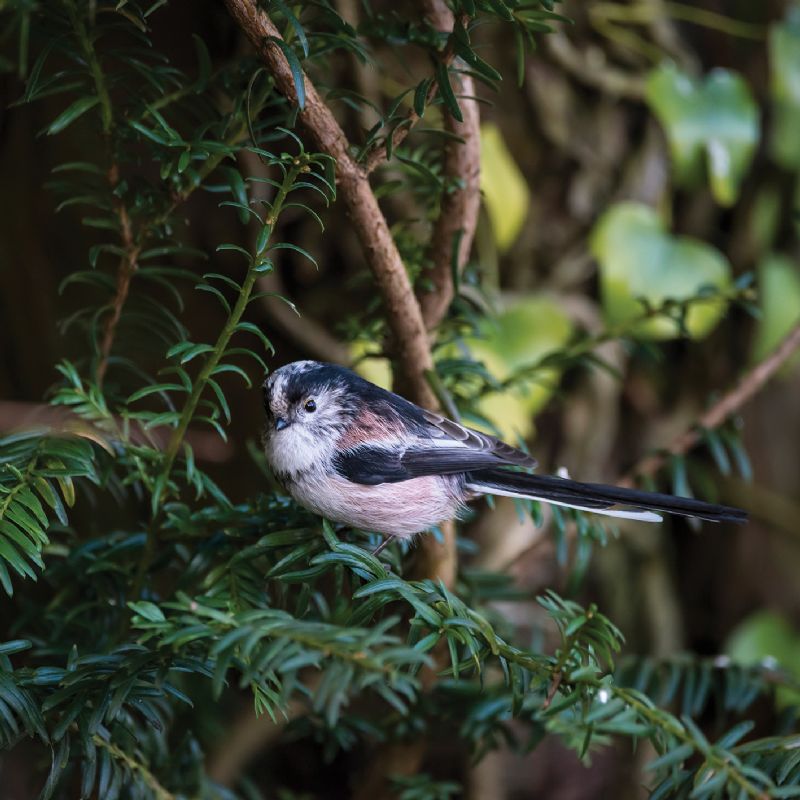- Home
- News, Articles & Reviews
We are hiring! Please click here to join our growing magazine delivery team in Gloucestershire!
Areas
Pets & Wildlife
Archive

Lovely long-tailed tits
All Areas > Pets & Wildlife > Wildlife Matters
Author: Dorothy Glen, Posted: Wednesday, 24th November 2021, 09:00
There is something very comforting to me about seeing our garden birds during winter and over the festive period. Robins are one of the stars of the Christmas show, and their cheerful song keeps us company and brightens the chilliest days.
At my daughter’s forest school the local robin is a regular attendee; it sits and watches the children digging and disturbing the ground in the hope of spotting something tasty for its lunch, and serenades us during story time.
But although robins are one of the joys of our winter, my favourite birds at this time of year are the characterful (and impossibly sweet) long-tailed tits.
Like lighter-than-air pom-poms
I remember these from my childhood, drifting through the garden in cheeky gangs every now and again, like lighter-than-air pom-poms with ridiculously long tails. If someone saw one we’d all rush to the window to watch them pass through, bobbing about in the trees and shrubs, popping over to the bird feeder for a snack before moving on to the next stop in their journey.
It still feels like a rare treat when I see them, and they’re always gone too soon.
Unusually social birds
Long-tailed tits are unusually social birds. In the spring when they breed, many nesting pairs have helpers in the form of other birds whose own nests have failed. Their nests are made largely from moss, and the birds then layer the inside with as many as 1,500-2,000 feathers.
Outside they disguise the nest with cobwebs and lichen. Despite the camouflage they suffer a high predation rate, but chicks raised in a nest with a helper are more likely to survive than those without.
They travel in groups of 20 in the colder months
In the winter we see them more regularly in our gardens, and if you are familiar with their chatter you can hear them coming. They are particularly noticeable because of their numbers; if you see one, there will almost certainly be more around, especially at this time of year. This is because they travel in groups of around 20 in the colder months, behaviour which isn’t seen in our other garden birds.
They hunt and roost together, forming huddles to keep warm. The young birds that hatch in the spring stay with their parents and helpers during the winter, meaning that, rather romantically, they spend Christmas with their family. Enjoy looking out for them in your garden!Other Images
Copyright © 2025 The Local Answer Limited.
Unauthorized use and/or duplication of this material without express and written permission from this site's author and/or owner is strictly prohibited. Excerpts and links may be used, provided that full and clear credit is given to The Local Answer Limited and thelocalanswer.co.uk with appropriate and specific direction to the original content.More articles you may be interested in...


© 2025 The Local Answer Limited - Registered in England and Wales - Company No. 06929408
Unit H, Churchill Industrial Estate, Churchill Road, Leckhampton, Cheltenham, GL53 7EG - VAT Registration No. 975613000You are leaving the TLA website...
You are now leaving the TLA website and are going to a website that is not operated by us. The Local Answer are not responsible for the content or availability of linked sites, and cannot accept liability if the linked site has been compromised and contains unsuitable images or other content. If you wish to proceed, please click the "Continue" button below:




